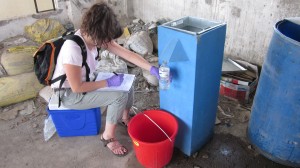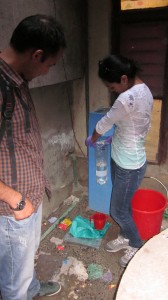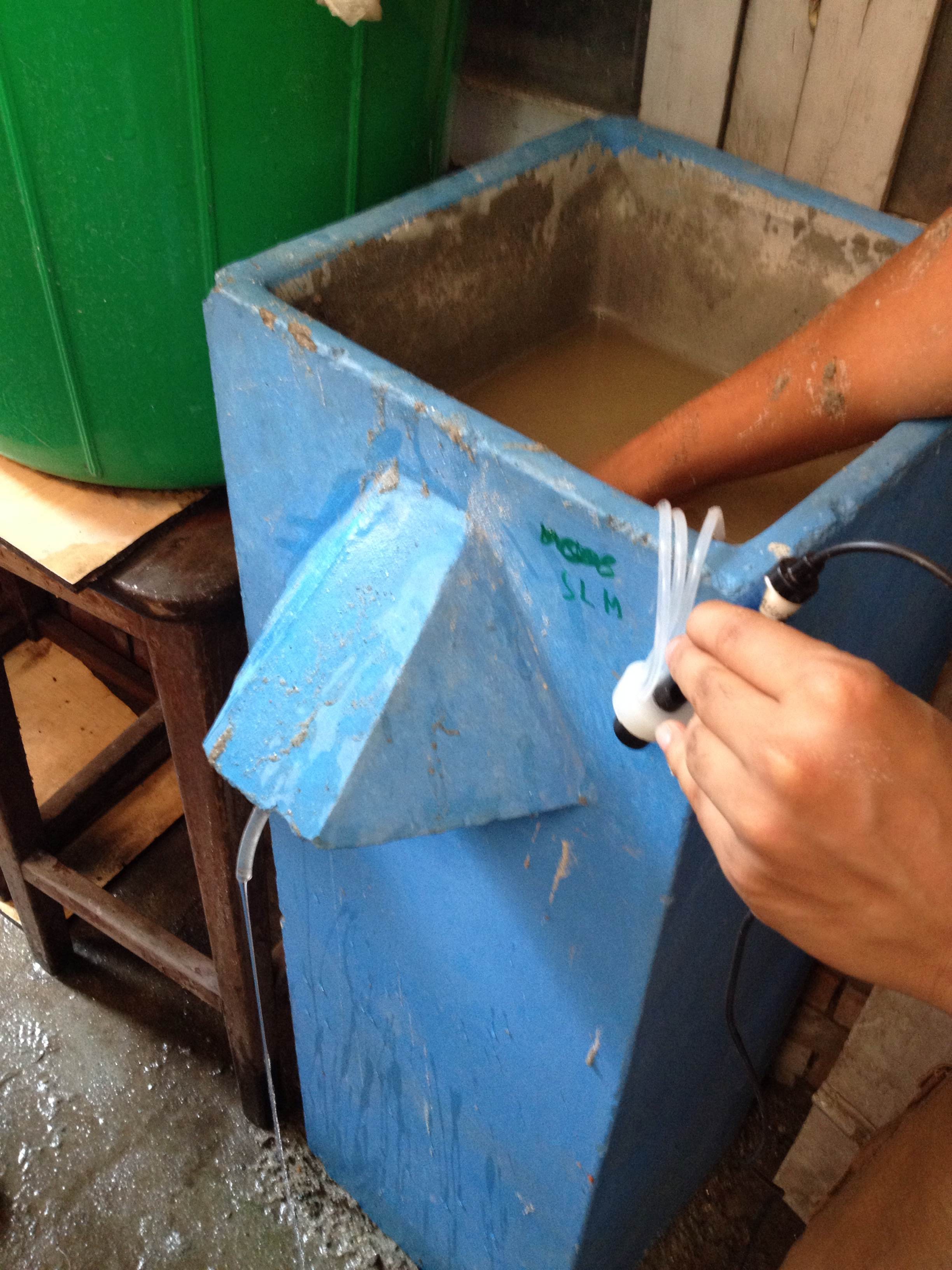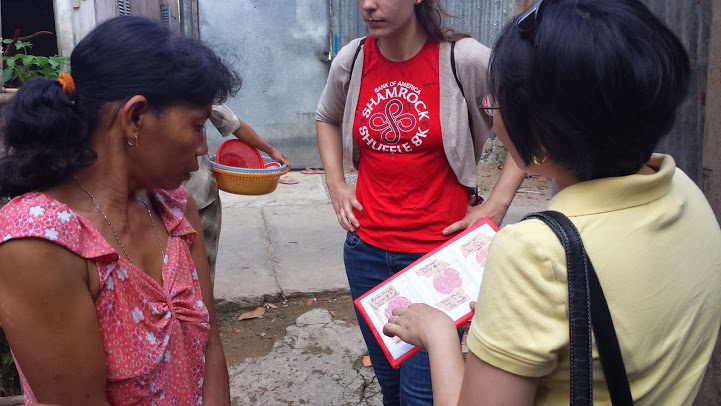Waterborne pathogens exist in drinking water in underdeveloped communities that do not use large-scale systematic water and wastewater treatment. By implementing biosand filter technology, a well-known point-of-use water treatment system, this project made a significant contribution to improving health of people who previously lacked access to safe drinking water. Both on-site and laboratory testing were used to assess performance of previously installed biosand filters in communities in Nepal and Vietnam and to determine the quality of source water. Additionally, dissolved oxygen sensors were implemented on a trial basis for remote monitoring of filter use. The World Health Organization defines improved drinking-water source as being, by nature of its construction and design, likely to protect the source from outside contamination, in particular from fecal matter. Our survey of drinking water quality revealed the existence of both safe and unprotected sources in three communities in Nepal and Vietnam.
Our travel team in summer 2014 consisted of Professor Helen Nguyen, Professor Joanna Shisler, Dr. Ofelia Romero, Nora Sadik, Hanting Wang, Marta Grabowski, Krisos Spyratos and Sital Uprety.
In Vietnam, Professor Helen Nguyen, Marta Grabowski and Krisos Spyratos took a detour from lab work to visit a community in Can Tho. We visited the last family who lives right near the church. The family is very poor, just a mother and a son. She is unemployed. She does not have money to pay for tap water so she used RIVER water. She takes river water, coagulate it using a local source of alum and then use the filter for the pretreated water. Her family uses this filtered water to drink because they cannot afford other options. They like the taste of the water and she said they did not have stomach upset. I think this is exactly the people that we want to help and what this woman does is right scientifically.
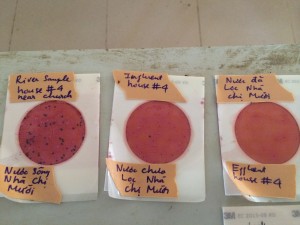
The one to the left with the most spots is water straight from the river then the middle one is one after coagulation then the last one is after the filter and you can see that there barely any bacteria.

